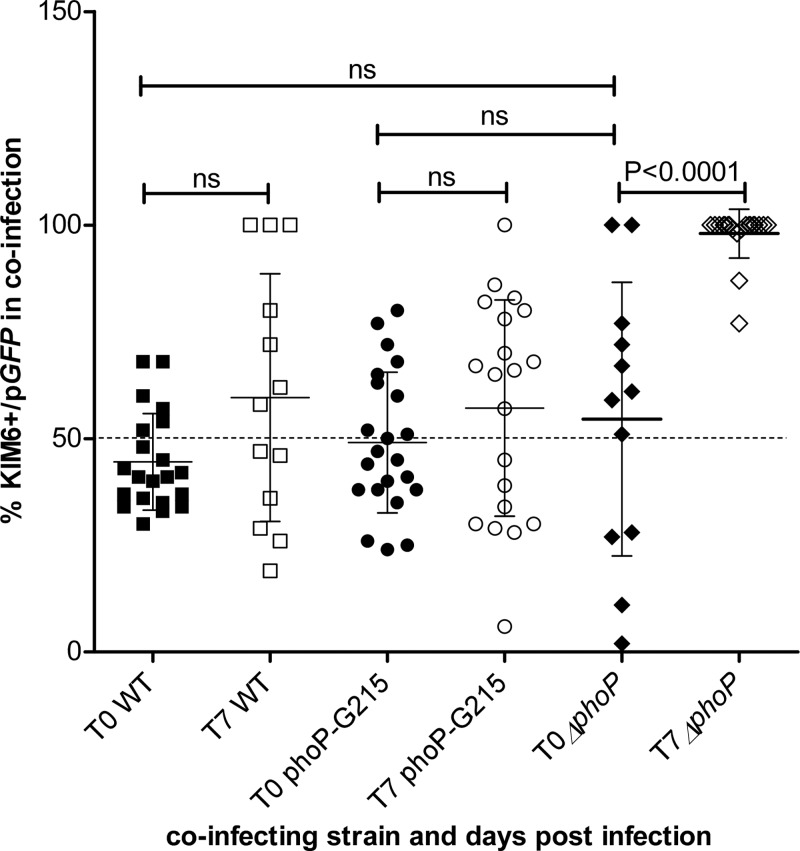FIG 5.
KIM6+ ΔphoP mutant is outcompeted by the wild type during flea coinfection, while KIM6+ phoP-G215 can colonize the flea equally well as the wild type. Cohorts of Xenopsylla cheopis fleas were fed on a blood meal containing a 1:1 mixture of wild-type (KIM6+ harboring an ampicillin/carbenicillin resistance cassette on plasmid pGFP [KIM6+/pGFP]) and the indicated phoP mutant or wild-type KIM6+ Y. pestis strains. At days 0 (T0) and 7 (T7) postinfection, Y. pestis cells colonizing the flea midgut were enumerated and the percentages of each strain colonizing the midgut were determined. For each coinfection experiment at a given time point, CFU was determined for 20 to 25 fleas that had fed on infected blood. Data points showing that 0 CFU were recovered from a flea were removed from the analysis (there was no apparent difference among three phoP variant strains in the number of fleas that gave 0 CFU.) Data were plotted as the percentage of the KIM6+/pGFP recovered from each coinfected flea. Error bars represent means ± standard deviations (SDs) from the percentage CFU data. Bars indicate the two groups that were assessed for statistical differences.

